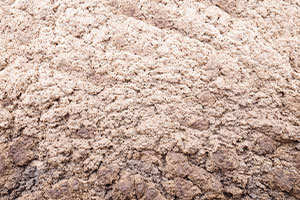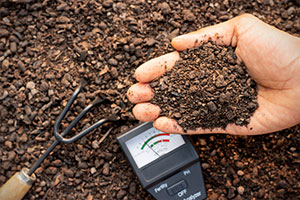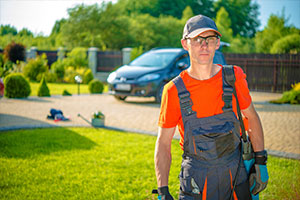 There are many steps involved in a swimming pool removal, but one of the most crucial steps comes at the end. It is known as compaction. Here is a closer look at what is involved in the process and why it is so important to the final result and the future integrity of your yard.
There are many steps involved in a swimming pool removal, but one of the most crucial steps comes at the end. It is known as compaction. Here is a closer look at what is involved in the process and why it is so important to the final result and the future integrity of your yard.
Why Does Dirt Need To Be Compacted After A Swimming Pool Removal?
When an inground swimming pool is demolished, the cavity that remains where the pool once stood is typically filled with clean fill material, which is usually composed of soil. Any time that soil is broken free from the ground, molecules of air enter it and cause it to fluff or expand significantly – sometimes by as much as 30%. Because the soil is full of air molecules that will eventually go away, the soil is bound to self-compress, or settle, which can cause problems for the yard.
When the fill material eventually settles because it was not properly compacted, it will require further backfilling. The area will then need additional work to match the rest of the yard, such as grass seeding and watering. It can also lead to water problems.
Soil compaction increases the load-bearing capacity and stability in your yard. It also prevents soil from settling, it reduces frost damage, and it decreases water seepage.
Compacting Dirt After A Pool Removal
Because it requires specialty equipment, compacting the dirt after a swimming pool removal is a job that is typically left to the pool removal contractors. There is a bit of debate over how this job should be done. While some contractors will drive a skid steer loader such as a bobcat over the loose fill material, this is not a good way to achieve adequate compaction. These loaders simply cannot create the centrifugal force needed to force the air molecules out of the soil properly.
Instead, a vibratory soil compactor like a trench roller needs to be used. With these tools, vibratory drums hit the ground with a far greater force than their static weight, allowing them to achieve maximum density compaction. Rollers have low frequencies and high amplitudes. This means that they can push soil particles together, which forces molecules together and has the effect of squeezing air out.
Filling And Compacting Dirt On Your Own
 If you are very confident in your skills and you have access to the right equipment, you might be wondering how to fill the swimming pool and compact the dirt on your own. After the walls have been removed, you may use the same excavator used for the previous steps in the project as a sort of mini-bulldozer to push the dirt into the hole. However, depending on your yard’s layout, you may need to use a skid steer to move dirt from its delivery point to the empty pool cavity bucket by bucket across multiple trips. It is important to push and pack the soil as it is being added as much as possible to help mitigate potential settling.
If you are very confident in your skills and you have access to the right equipment, you might be wondering how to fill the swimming pool and compact the dirt on your own. After the walls have been removed, you may use the same excavator used for the previous steps in the project as a sort of mini-bulldozer to push the dirt into the hole. However, depending on your yard’s layout, you may need to use a skid steer to move dirt from its delivery point to the empty pool cavity bucket by bucket across multiple trips. It is important to push and pack the soil as it is being added as much as possible to help mitigate potential settling.
This is when a trench roller can be used to help compact the soil. Once you get closer to the top, you can use the weight of the machine to compact the soil further by walking it across the area. When you reach a depth of around a foot from the top, it is time to use topsoil. It is recommended that at least three to six inches of topsoil are laid to give grass room to grow. If you have equipment with a blade, this can be used to give the area a rough grade before the topsoil is applied. Then, you can put down grass seed and fertilizer or sod.
Pay Attention To The Soil’s Moisture Content
It is important to consider the moisture content in the soil before you start your compaction work. Too much moisture in the soil will weaken stability, but not enough moisture can lead to poor compaction. If you pick up a handful of soil in your hand and squeeze it and then open your hand and drop the soil, it should mold when you squeeze it but break into a few pieces when you drop it. Soil that leaves moisture in your hand, and that retains the mold of your hand when it is dropped, has too much moisture to be compacted.
Still Unsure? Hire A Professional Contractor
 A pool removal is a significant project that can cause problems for even the most seasoned DIYers. If you do not have any experience with the machines needed to carry out the work or have any concerns about your ability to achieve proper compaction, you should seriously consider hiring a contractor. If cost is a concern, set a reasonable price and let the contractor know about your budget from the outset. It is important to have all of the details involved in the project specified in the contract.
A pool removal is a significant project that can cause problems for even the most seasoned DIYers. If you do not have any experience with the machines needed to carry out the work or have any concerns about your ability to achieve proper compaction, you should seriously consider hiring a contractor. If cost is a concern, set a reasonable price and let the contractor know about your budget from the outset. It is important to have all of the details involved in the project specified in the contract.
When choosing a contractor, it is essential to go with one that has specific experience in pool removal. Although some landscapers may say that they can do the job for a very low price, their lack of specialized experience could make this an even costlier endeavor in the long run as the potential for expensive damage is so high when the work is not carried out properly.
You will want to use a pool removal company that has referrals from recent customers. Make sure that they have insurance in place to provide coverage if something goes wrong. For example, a machine may inadvertently cause damage to your home or deck or a gas line could be ruptured while the work is being carried out. If you use a contractor without insurance, you could take a steep financial hit in such scenarios.
Reputable pool removal companies will be happy to provide a free estimate for the work and go over the whole process in person.
Get In Touch With The Pool Removal Professionals
Pool removal is a serious job that is best left to the experts. If you need help with an inground pool demolition in the Northern Virginia area, get in touch with our pool removal contractors at Dirt Connections. We can demolish and haul away your pool, back fill it with dirt and grade the yard to perfection.
Summary

Dirt Connections was started with one goal in mind: providing quality residential and commercial construction services to clients on time and on budget. Reach out for more information on how we can support your next project.
For your convenience our estimates are free and by appointment. Call 703-940-9949 for a free estimate today!









































